Every year numerous consumers are injured by defective products. (See http://www.cpsc.gov/en/Research–Statistics/Injury-Statistics) The defects that cause these injuries can typically be broken down into three main categories: design defects; manufacturing Defects; and/or inadequate instructions or warnings.
Deciding whether to pursue a products liability case or how such case should be pursued depends greatly on the severity of the injury and the complexity of the product. It may be assumed that at least one expert will be needed in order to establish that the product was in fact defective. In reality, however, complex products typically require a battery of experts to cover different aspects of the design and operation of the product. For example, much machinery operates through a combination of mechanical and computer technology. A mechanical engineer, a software engineer and/or a safety or human factors expert may be needed. These experts are essential to educate the attorney, help spot the defect and help consider what alternatives could have been used to eliminate the defect while retaining the utility of the product.
Where there has a been a failure in the materials of the product, the attorney must consider a manufacturing defect in addition to all the other possibilities. A metallurgist or materials expert who can analyze the failure and the reason for the failure is necessary. Questions that must be addressed include: is the material itself appropriate?; was the material exposed to conditions such as extreme temperatures within the distribution chain that affected its characteristics?; was the material poorly maintained?; further were any of the conditions that may have altered the material reasonably foreseeable and what steps should have been taken to protect the product against such conditions?
When the product functioned as intended, but still caused injury, the attorney must consider whether the instructions or warnings were adequate. This includes not only the content of the instructions or warnings but also how such information was conveyed to the consumer. For example, if critical instructions are included only on packaging that is intended to be discarded, such instructions may not be adequate. On the other hand, if the consumer was sophisticated enough to know the information that should have been conveyed to him or her, an inadequate information / warnings argument will fail.
Safety engineers recognize a hierarchy of safety controls which, arguably, manufacturers should follow to keep their products safe for you. First, the hazard should be eliminated whenever possible; if the hazard cannot be eliminated, then the manufacturer should provide sufficient guarding against the hazard; and finally where the hazard cannot be eliminated or fully guarded, the manufacturer should provide adequate warnings or instructions. The attorney and the experts considering whether a product liability claim exists must consider whether the manufacturer adhered to these safety considerations.
A common defense to products liability claims is that the product was altered after leaving the hands of the manufacturer. Again whether such alterations were reasonably foreseeable or could have been considered in the design elements of the product should be examined. For example, what maintenance requirements were anticipated? What risks were associated with a foreseeable failure to maintain the product by the consumer?
Because products liability cases can be extremely expensive to pursue, given the need for expert involvement, the attorney should research whether there have been any recalls or other lawsuits pertaining to the same product. If a design defect has already been investigated by others, much time and expense can be saved and that ultimately allows for a better outcome for the client.
It is essential to preserve the product and photograph / document the condition of the product when first inspected in order to defend against any future spoilation accusations. It is also advisable to purchase an exemplar with its original packaging. All of these steps should be taken to ensure the best possible outcome.


